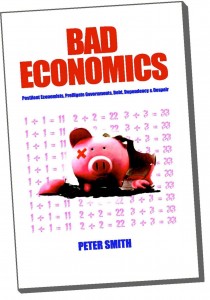This is a recent Lateline featuring Jennifer Westacott, chief executive of the Business Council of Australia, interviewed by Emma Alberici. The topic turned to childcare.
Westacott: … clearly participation is a huge issue and obviously childcare is a big part of that. It’s a big part of participation. It’s also, to be honest, a big part of progression. You know, you talk to lot of women who are trying to get into senior positions and they’ll say that the cost of childcare is crippling their ability to stay in the workplace, to put in the hours, to do the progression through the leadership ranks. So it’s both a participation issue and a progression issue…
Alberici: Have both sides been too slow to act on this?
Westacott: I think so … We can’t have it both ways. We can’t want people participating without having access to affordable childcare. And we’ve got to make sure that that’s across all sectors of society. Can’t just be for wealthy people; it’s got to be for people across all income streams so that they can get back into work and sustain work, and it’s also got to be in a way that adds to people’s quality of life. I mean, you don’t want to see people really struggling to work, look after a family and then not be able to afford their childcare.
Where is Mary Poppins when you need her? Now this is not Sarah Hanson-Young or another green starry-eyed utopian. This is the head of the BCA comprising the CEOs of Australia’s top companies. It shows how disconnected our society is becoming from economic reality. The difference between us and welfare-bloated European nanny states is becoming not much more than seams of coal and iron ore.
What is meant by “affordable childcare”?  Short of putting the nippers into suspended animation during the day to cut down on supervision costs, the only thing that comes to mind is the kind of childcare paid for by other people. But which other people is the question.
Short of putting the nippers into suspended animation during the day to cut down on supervision costs, the only thing that comes to mind is the kind of childcare paid for by other people. But which other people is the question.
Young single people are generally on the bottom half of the income ladder. Dual income families with no kids are generally struggling to save enough to buy a house, to pay rent or a mortgage, or to afford to have a child. Older people whose children have grown, and who managed to get by without subsidised childcare, are either retired or saving for their retirement. Let’s face it; this only leaves the rich.
We have to tax rich people more; not only to pay for childcare but also to pay for the existing, increasingly costly, social welfare programs and for the looming dental and disability ones. But here’s the rub. Rich people provide the savings which underpin investment and our growing prosperity. Taxing them more makes us less prosperous and less able to fund social welfare programs.
Perhaps if there were more rich people we could tax them a bit more. That’s it. We simply need more rich people. It is so obvious an answer that I am surprised nobody has thought of it before.
Let me cut to the chase. If childcare is unaffordable for even women aspiring to top jobs; then it is quite simply unaffordable. Pandering to those who want it would be like pandering to those yearning for a Lamborghini or a mansion on Sydney Harbour.
In fact, however, childcare is not in the same category as Lamborghinis and mansions. It is affordable for most people who are prepared to pay a substantial part of their income; and give up lots of things they might otherwise enjoy. Why would they do this? They might do this because it is still more remunerative than any alternative; or, because it allows them to maintain a career path which they can develop further once their children are grown (like those women aiming for top jobs); or, because it gives them a preferred lifestyle. Whatever the rationale it is the private business of the people concerned and they should not expect others to pay for it. It is their choice; their children; their joy; their problem.
Visit Peter Smith’s website badeconomics.com.au
Peter Smith is the author of Bad Economics (Connor Court). You can purchase copies (post free) here…
Subscribe to Quadrant magazine here…
 Sign In
Sign In 0 Items (
0 Items ( Search
Search









